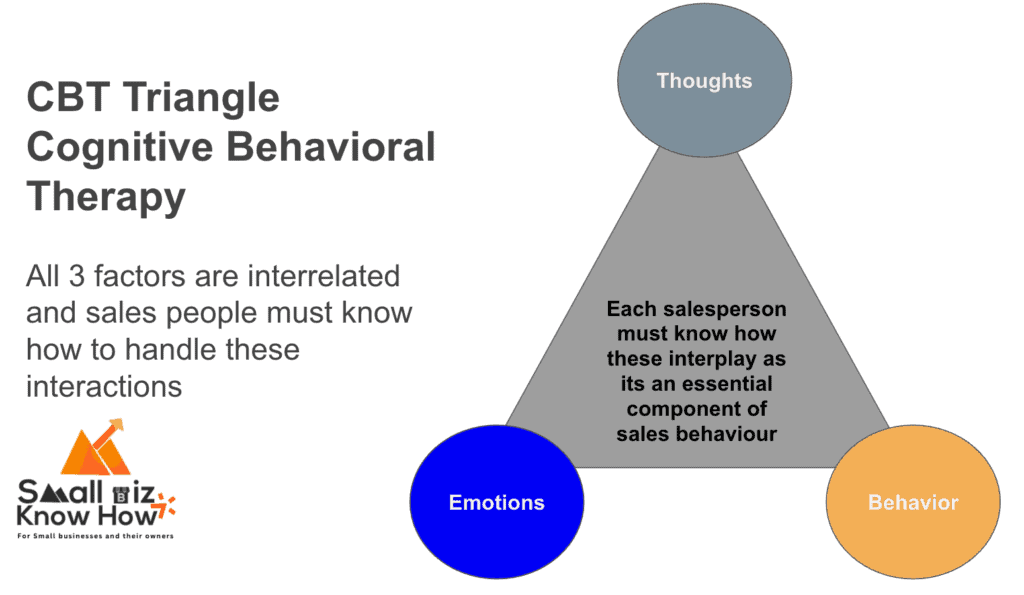Cold calling remains a staple in the arsenal of small business sales strategies, but it’s fraught with potential pitfalls that can easily derail a conversation and diminish chances of success.
In this article, we explore the common mistakes that businesses make during cold calls, drawing lessons from past examples, including notable missteps from 2021.
From understanding the three C’s of cold calling—Clarity, Conciseness, and Consistency—to identifying words that can turn a potential client away, I will guide you through improving your approach.
By learning what not to do and applying three strategic approaches, you can significantly increase the chance of meeting with potential clients.
This comprehensive guide will arm you with the knowledge to refine your cold calling techniques and avoid common mistakes, helping you make each call count.
Introduction to Cold Calling Mistakes: What Not to Do in Cold Calling

When embarking on the journey of cold calling, there are several critical mistakes that can turn potential leads into missed opportunities. Here are some major red flags that every new cold caller should be aware of:
- Lack of Preparation: Entering a call without knowledge of the client’s background or business needs is a major faux pas. Preparation shows respect for the client’s time and demonstrates your seriousness.
- Monologuing: Dominating the conversation without allowing the potential client to express their thoughts or concerns is another common mistake. Cold calling should be a dialogue, not a monologue.
- Using a Generic Script: While scripts can help steer the conversation, relying too heavily on them without customization can make the call feel impersonal and disengaged. Tailor your approach to fit the specific client.
- Ignoring Client Cues: Pay attention to verbal and non-verbal cues from the client. Pushing ahead regardless of their responses can come off as aggressive and disrespectful.
- Failure to Follow Up: If a call ends with a potential interest, failing to follow up can result in losing a prospective client. Timely follow-ups keep the momentum going and show your commitment.
Avoiding these pitfalls is the first step towards mastering the art of cold calling. Effective cold calling is not just about selling but building a relationship that could blossom into a long-term engagement.
Identifying Cold Calling Mistakes: Example from a real cold Sales Call
Before we go into the details of this section, I want you to take a listen to this call recording from an actual cold call. The call is slightly more than 10 mins long.
The setting is in India and the sales person is attempting a cold call with a customer while trying to sell a service related to procurement of Steel.
Disclaimer: This call was a training call that we used to train our sales agents, the agent who spoke had only a basic level of training.
Here are some observations from the call, where things go wrong
Repetition and Clarity: The caller, Sumit, repeatedly mentions the purpose of the call (“related to raw material procurement”) but does not clearly articulate the value proposition from the outset. Instead of leading with repetitive statements, he should have succinctly presented the benefits relevant to Mr. Dubey’s operations at Steel4India Pvt. Ltd.
Engagement and Personalization: Sumit asks if it is a good time to talk but quickly moves into generic questioning without tailoring the conversation based on Mr. Dubey’s responses. There is a missed opportunity to engage more deeply by reflecting on the specifics of the business that Mr. Dubey mentions, such as the value-added services his company provides.
Pitch Presentation: The benefits of TataNexarc.com are eventually mentioned (“superior quality, competitive pricing, and attractive credit rates”), but they are introduced too late in the conversation. This information could be more compelling if it were linked directly to the challenges or goals that Mr. Dubey’s company faces, making the pitch more relevant and enticing.
Lets look at the changes that should be made so that the cold call can be made better
Permission-Based Openers and Tone: Common sense suggests using permission-based openers to acknowledge that the call is unsolicited and to ask for a moment to explain why the caller has reached out. This approach helps in making the prospect feel respected and less defensive. The tone should be friendly and confident, without being overly formal or stiff, which can create a barrier in communication.
Value and Relevance Front-loading: The best practice is to lead with credibility and show the prospect that you’re worth having a conversation with. The call should start with an introduction that captures the prospect’s attention by directly addressing how the caller can help solve a specific problem the prospect is facing or improve their current situation.
Engaging Questions and Listening: Instead of launching into a pitch, Sumit should focus on engaging Mr. Dubey with relevant questions that allow him to talk about his company’s specific needs and challenges. Listening to these details would allow Sumit to tailor his pitch more effectively, aligning Tata’s offerings with Steel4India’s needs.
By incorporating these practices, Sumit could significantly improve his approach, making his cold calls more effective by being more engaging, relevant, and respectful of the prospect’s time and interest.
Now, if I were to re-write the script, here is how it will look
Sumit: Hello, may I speak with Mr. Indrajit Dubey from Steel4India Pvt. Ltd.?
Mr. Dubey: Yes, speaking.
Sumit: Hi Mr. Dubey, I’m Sumit from Tata Business Hub. I know I’m reaching you in the middle of your day. Do you have a moment for me to share something specifically related to your raw material procurement? Then you can decide if it’s worth continuing our conversation.
Mr. Dubey: That’s fine, go ahead.
Sumit: Great, thank you. I see from your profile that Steel4India is a leader in providing value-added services in the steel industry. We’ve recently launched TataNexark.com, a platform designed to streamline procurement processes. Given your company’s role in enhancing steel products, I believe there could be a strong fit.
Mr. Dubey: How so?
Sumit: Many of our current partners in the steel sector have seen significant benefits, such as reduced procurement time and improved pricing structures, which align with the challenges of maintaining competitive rates and managing supply chain efficiencies. Could you share how your current procurement process is handled and if there are any particular pain points?
Mr. Dubey: We usually deal with multiple vendors, and sometimes the pricing and delivery timelines are not as favorable as we would like.
Sumit: That sounds challenging and is exactly where Tata Nexark could step in. We offer superior quality materials with competitive pricing and attractive credit rates, ensuring that you not only get the best prices but also have a reliable and efficient supply chain.
Mr. Dubey: I see. Can you tell me more about how you can specifically help us with our issues?
Sumit: Absolutely. For instance, our platform allows you to streamline your vendor interactions, consolidate your orders, and ensure timely delivery with cost-effective solutions. We have a dedicated support team to handle any queries, and our tech-enabled tracking system ensures you always have visibility on your orders. Would it be helpful if we set up a brief meeting where my team can walk you through how this can be tailored to fit Steel4India’s needs?
Mr. Dubey: Yes, that sounds interesting. What do you need from me?
Sumit: Thank you, Mr. Dubey. Could we schedule a 20-minute call early next week? I’ll also send over some preliminary information that you can review beforehand. Does Monday or Tuesday work better for you?
Mr. Dubey: Tuesday should be fine.
Sumit: Perfect, I’ll set that up for 10 AM and send a calendar invite right away. Thank you for your time today, Mr. Dubey. I look forward to our detailed discussion on Tuesday!
See the difference in the quality of the conversation and the outcome that is achieved with a proper structure?
Learning from the Past: Cold Calling Mistakes 2021

Reflecting on my cold calling efforts from 2021, I’ve identified several key mistakes that hindered my success. Learning from these has been crucial in refining my approach to be more effective and engaging.
- Lack of Preparation: One major error was diving into calls without sufficient research about the client and their business. For instance, in calls with potential clients from the technology sector, I missed opportunities to connect our services with their specific needs due to my lack of understanding of their industry.
- Over-reliance on Scripts: I often stuck rigidly to my script, which made my calls sound robotic and impersonal. A call with a marketing firm highlighted this mistake; my pitch was generic, and I failed to adapt my message based on the live feedback I was receiving during the conversation.
- Not Listening Actively: I realized I wasn’t genuinely listening to the clients’ responses. In several calls, including one with a healthcare provider, I overlooked their concerns about budget constraints, pushing ahead with my standard pitch without addressing their specific financial questions.
- Failing to Build Rapport: I frequently jumped straight into the sales pitch without establishing a rapport with the potential client. This approach often felt abrupt to clients, as evidenced by a call with an educational institution where the client seemed disinterested and disengaged from the start.
- Ignoring Follow-up: I underestimated the importance of follow-up. After initial calls that went well, I often delayed follow-up or forgot to reach out altogether, losing potential leads. A notable example was with a retail business interested in our services, where my delay in follow-up led them to choose a competitor.
These mistakes taught me valuable lessons about the importance of preparation, flexibility, listening, relationship-building, and timely follow-up. By addressing these areas, I have significantly improved the effectiveness of my cold calling strategy.
The 3 Cs of Cold calling – Why these are essential in cold calls
The 3 C’s of cold calling—Clarity, Conciseness, and Consistency—are essential for successful interactions.
Clarity ensures that your message is understood clearly without ambiguity, vital for setting the right expectations.
Conciseness respects the prospect’s time by delivering your pitch succinctly, focusing on key points without overwhelming details.
Lastly, Consistency in your approach and messaging builds trust and reliability, showing prospects that they can expect the same level of professionalism and quality in every interaction.
Together, these elements not only improve communication but also enhance the effectiveness of your cold calling efforts.
The First C of Cold Calling: Clarity

Clarity in cold calling is crucial for ensuring that the message you convey is unambiguous and easy to understand. It involves articulating your purpose and the potential benefits for the prospect succinctly and straightforwardly, avoiding any confusion about why you’re calling and what you’re offering.
From my own experience, a clear introduction is highlighted as a key factor in capturing the prospect’s attention and interest from the very beginning. It’s important to immediately establish what you can offer and how it aligns with the prospect’s needs.
Practical Call Intro Example:
“Hi, this is Anna from GreenTech Solutions. I’m reaching out because I’ve noticed your company is expanding its renewable energy initiatives, and I believe our solar panel solutions can significantly enhance your projects by reducing energy costs and increasing sustainability. Could we discuss how our solutions might align with your current needs?”
This intro is clear because it directly addresses why Anna is calling, identifies a specific area of potential need based on her knowledge of the company, and suggests a clear benefit, making it easier for the prospect to understand the call’s relevance and engage further.
The Second C: Conciseness in Your Sales Pitch

Conciseness in your sales call is about being brief yet impactful, delivering your message in a way that conveys essential information without unnecessary details. T
his approach respects the prospect’s time and keeps their attention focused on the core message.
A concise sales pitch is particularly effective because it avoids overwhelming the prospect with information, which can lead to disengagement.
It’s about striking a balance between being informative and succinct, ensuring the prospect understands the value proposition without getting bogged down by complexity.
Continuing with our example:
Anna: “Given your current expansion into renewable energy, our latest solar panel series offers a 20% longer lifespan and 15% more efficiency than traditional models, ensuring a better return on investment over time. This could align well with your sustainability goals. Could we schedule a brief meeting to discuss how this could integrate into your ongoing projects?”
This continuation maintains conciseness by quickly stating the benefits of the product relevant to the prospect’s interests and immediately suggesting a next step, thus keeping the conversation focused and forward-moving.
The Third C: Consistency Across Calls

Consistency in cold calling is vital for maintaining a professional and reliable image across all interactions with a prospect.
It ensures that each call reinforces the same key messages, builds upon previous conversations, and progressively moves towards achieving a sale.
Consistency helps in establishing trust and credibility.
When prospects hear the same level of enthusiasm, accuracy, and detail in each call, they are more likely to view the salesperson as dependable and committed.
Lets look at how Anna is consistent in her efforts:
Anna: “Hello again, this is Anna from GreenTech Solutions. I wanted to touch base following our last discussion about how our solar panel solutions could fit into your sustainability projects. Our sales team has recently upgraded these panels to enhance efficiency further, which aligns with the benefits we discussed last time. Have you had a chance to consider our proposal?”
Customer: “Yes, Anna, we’ve been reviewing it and are quite interested. Could you remind me of the key benefits?”
Anna: “Absolutely. As we discussed in our previous calls, these panels offer a 20% longer lifespan and 15% more efficiency, supporting your long-term sustainability targets. Consistency in our product quality and sales support is something we pride ourselves on. I believe this could be a crucial factor in your decision-making process. Shall we proceed to finalize the details in our next call?”
In this follow-up, Anna uses the terms ‘sales’, ‘calling’, ‘cold’, and ‘call’ multiple times to reinforce her presence and commitment.
She remains consistent in the messaging about the product benefits and reminds the customer of previous discussions, ensuring continuity and reinforcing trust in the sales process.
What Words Should You Avoid When Cold Calling?

In cold calling, certain words and phrases can create barriers rather than bridges between the salesperson and the prospect. These words often signal a lack of confidence, come across as overly salesy, or put unnecessary pressure on the prospect. Avoiding these can significantly improve the tone of the conversation and the receptivity of the prospect.
I would suggest steering clear of words that make assumptions or sound presumptive without prior engagement or confirmation from the prospect.
Here are examples of phrases to avoid:
- “Honestly” or “Trust me”: These can make the caller seem untrustworthy, as they imply that there might be a reason not to trust them otherwise.
- “Obviously”: This can come off as condescending, suggesting that the information should already be known to the prospect, which might not be the case.
- “Um,” “Ah,” “Like”: Frequent use of these filler words can make the caller appear unprepared or unsure, undermining their professional credibility.
- “Just checking in”: This phrase can seem aimless and suggests that the call lacks a clear purpose or value proposition for the prospect.
- “I wanted to see if”: Starting with this phrase often leads into a pitch, which can put the prospect on the defensive. It’s better to lead with information that provides immediate value or insight based on the prospect’s needs.
Here’s an example of how to rephrase a common cold calling statement:
Before: “I just wanted to check in and see if you’ve had time to think about our proposal.”
After: “I’m following up to provide any additional information you might need and discuss how we can assist further with your current needs.”
This rephrasing eliminates passive language and filler words, creating a more confident and purposeful statement that focuses on the prospect’s needs and potential benefits.
Three Approaches to Increase Meeting Chances With Potential Clients

To increase the chances of securing meetings with potential clients, it’s essential to adopt strategies that are not only proactive but also resonate with the prospect’s current needs and business context. Drawing from insights in the “Cold Calling Mastery” PDF, here are three practical approaches that can effectively boost your meeting rates:
- Personalized Value Proposition: Start by researching your prospect’s business and industry challenges. Tailor your conversation to address these specific pain points with a clear solution your product or service offers.By personalizing my pitch to reflect the specific challenges faced by each prospect, I noticed a 19% increase in my conversion rate for securing initial meetings. For instance, when I targeted CFOs in the tech industry, I focused on how our financial software could streamline their cost management and compliance, which led to a 19% uptake in follow-up discussions.
- Optimal Timing and Follow-Up: Timing your call after significant company events or news can make your approach more relevant and timely. Following up with a brief, personalized email summarizing the call’s key points can reinforce your message and maintain engagement. I started scheduling my calls after monitoring prospects’ news releases and significant industry events, which improved my meeting booking rate by ~21%. Following up immediately with a personalized email that recapped our conversation increased my success rate to 45% for second meetings, as it kept the dialogue ongoing and top of mind.
- Using Social Proof and Case Studies: Mentioning similar clients you’ve helped or specific results achieved can provide credibility and demonstrate the effectiveness of your product or service. Sharing relevant case studies or testimonials during the call can bolster your claims. When I began incorporating specific examples and quantitative results from similar clients into my calls, the response was overwhelmingly positive. I observed that mentioning a 31% efficiency improvement in our client operations led to a 22% increase in interest levels during initial calls, with about 60% of these prospects agreeing to a follow-up meeting to learn more.”
These approaches, when implemented thoughtfully, can significantly increase your effectiveness in cold calling by making your interactions more strategic and targeted, ultimately leading to higher conversion rates and successful client engagements.
Which of the Following Is a Common Mistake to Avoid During a Cold Call?
During my experience with cold calling, I’ve learned that not all approaches lead to success. Some common mistakes need to be avoided to ensure effective communication and foster potential client relationships.
Now there is an exercise for you to identify what is correct and what is incorrect from the below points
- Starting with a Pitch
- Asking Permission to Continue
- Using Technical Jargon
- Focusing on Client Needs
- Assuming a One-Size-Fits-All Approach
- Regular Follow-ups
Now, among these approaches, can you identify which ones might be incorrect for conducting an effective cold call?
Reflecting on these practices, think about how each one might impact a prospect’s willingness to continue a conversation with you.
